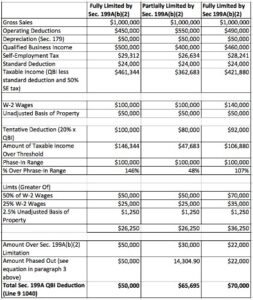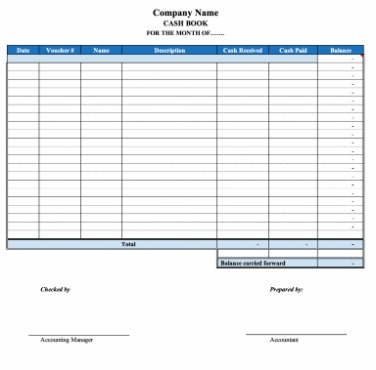
These details help streamline your processes and ensure compliance with tax regulations. Managing the financial aspects of a business is crucial for success, and QuickBooks Online is a powerful tool that offers a range of features to streamline the process. One three main methods of calculating depreciation such feature is the ability to add categories, which allows you to organize your financial transactions and track them more efficiently. Whether you need to classify expenses, income, or assets, QuickBooks Online makes it easy to create and manage categories that align with your business needs.
Unlike account types, detail types don’t impact the actual accounting portion of your books. Detail types are there to help you choose the right account type, especially if freight expense you’re new to accounting. They also help you break down your account types into “categories” so it’s easier to see a breakdown of what your money is doing. Properly categorized transactions also facilitate tax preparation and audits, ensuring compliance with financial regulations. It provides a clear overview of how money flows in and out of the business, offering valuable insights for improving financial performance and optimizing expenditures. Setting up categories in QuickBooks Online involves customizing the chart of accounts to accurately represent the financial categories relevant to the business.
- This process enables them to generate detailed financial reports, such as profit and loss statements and balance sheets, which are vital for making informed business decisions.
- You can easily modify the details to reflect new business activities, rename categories for better clarity, or update tax codes as needed.
- Categorized reports play a pivotal role in visualizing trends, identifying areas for cost-saving or revenue optimization, and presenting a clear picture of the financial health of the business.
- By standardizing categories, users can optimize the software’s capabilities, resulting in improved efficiency and accuracy in financial record-keeping.
- Utilizing subcategories in QuickBooks Online allows businesses to achieve more detailed tracking and analysis of financial data, enhancing the depth of reporting and insights into business finances.
Learn about accounts that QuickBooks sets up for you

This helps in organizing financial data efficiently, ensuring accurate reporting and analysis. Matching transactions to pre-set categories is a vital step in streamlining your bookkeeping process. By doing so, you can quickly and accurately track your income and expenses, making it easier to analyze your financial performance. Custom categories offer you the flexibility to track specific expenses or revenue streams that are unique to your business. By accurately categorizing these transactions, you can gain a more comprehensive understanding of your financial situation and make informed decisions.
Each detail type includes a description of how you would use that account in the field below it (or you might see an info button with the description). When categorising transactions in QuickBooks Online, you want to pick categories that make sense and match your business’s financial reporting needs. This process allows users to categorize transactions, expenses, and income streams, providing valuable insights into various aspects of financial operations. Categorized reports play a pivotal role in visualizing trends, identifying areas for cost-saving or revenue optimization, and presenting a clear picture of the financial health of the business. Using categories in QuickBooks Online enables businesses to generate comprehensive reports based on specific financial categories, facilitating in-depth tracking and analysis of business finances.
What Are Some Common Mistakes to Avoid When Using Categories in QuickBooks Online?
By properly utilizing the split feature, you can maintain precise financial records and generate meaningful reports for analysis and decision-making. Understanding the purpose and function of each category is crucial when categorizing transactions in QuickBooks. tax deductions for officers of a nonprofit organization Take the time to familiarize yourself with the available categories and their meanings, ensuring that you assign transactions to the most appropriate category. This attention to detail will help maintain accuracy in your financial records, making it easier to monitor your business’s financial health.
Understanding Categories in QuickBooks
This process enables businesses to better understand their spending patterns, allocate resources efficiently, and make informed decisions. By organizing expenses into specific categories such as office supplies, utilities, or travel, QuickBooks Online streamlines the tracking and reporting of financial data. This categorization not only simplifies tax preparation but also aids in identifying areas where costs can be optimized, thus contributing to improved financial management and overall business success.
This negligence could lead to misinformed decision-making based on unreliable financial data, undermining the organization’s ability to monitor performance, assess profitability, and plan for future growth. The lack of accurate categorization can also impede tax compliance, possibly resulting in penalties or audit triggers. Creating categories for expenses in QuickBooks Online allows businesses to effectively categorize and track their expenditure, providing valuable insights into financial outflows. They allow businesses to categorize their expenses, such as office supplies, utilities, or marketing, which helps in tracking where the money is being spent.
Regularly reviewing and organizing your subcategories can help maintain a clean and organized Chart of Accounts. As your business evolves, you may need to add, modify, or delete subcategories to reflect any changes in your transaction patterns. Keeping your subcategories up to date ensures that your financial records accurately represent your business’s current state. When categorizing transactions, ensure that you select the appropriate subcategory under the relevant parent category. This level of specificity ensures accurate reporting and allows for a more comprehensive understanding of your financial situation.
